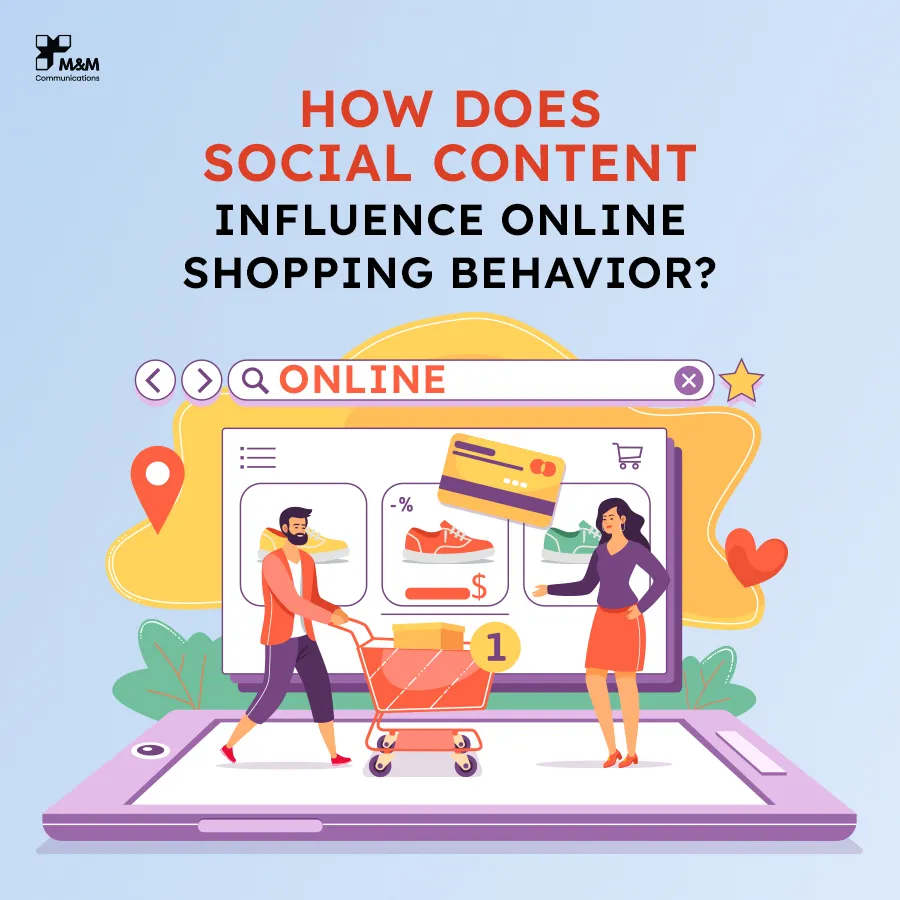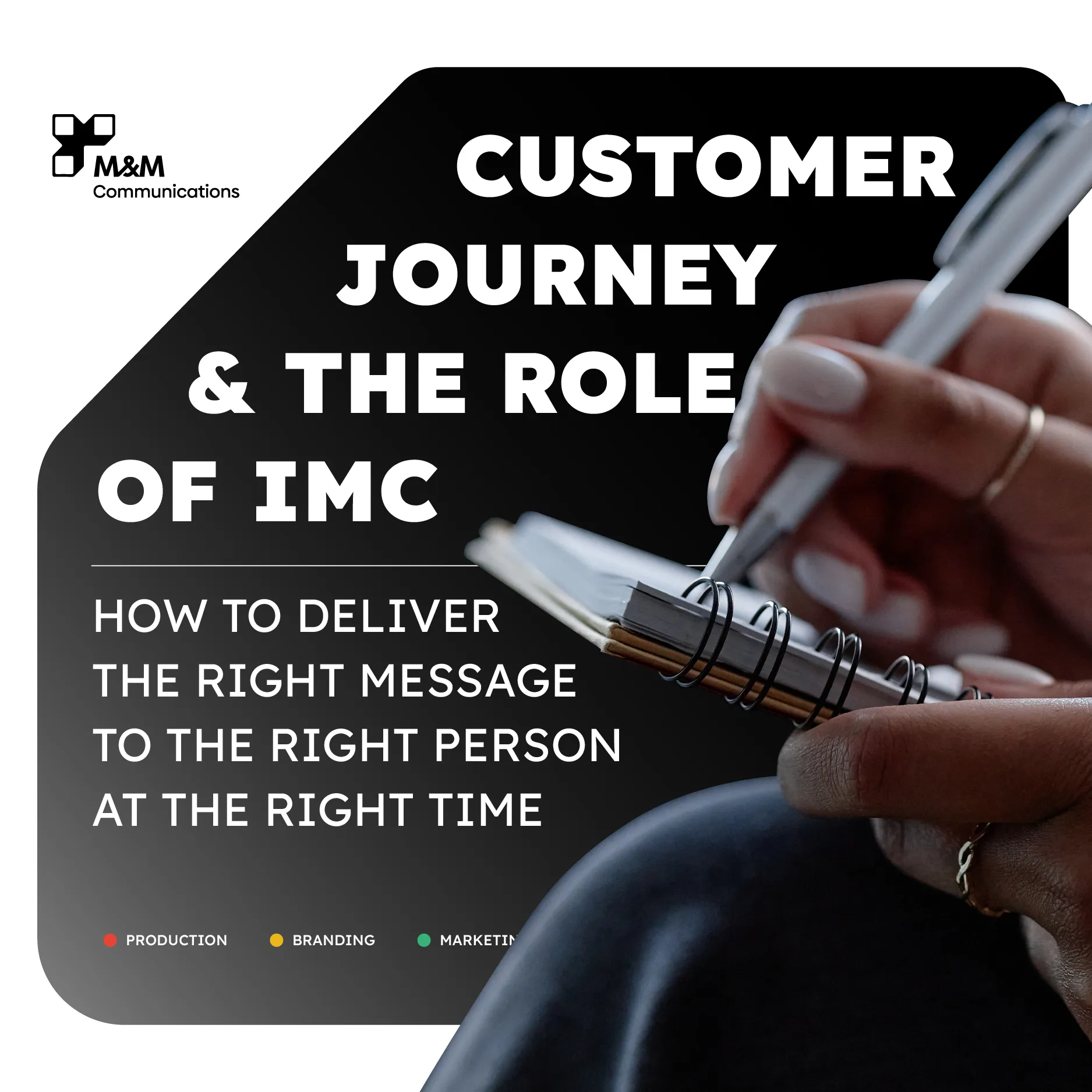
Social content is considered as a key tool in many businesses’ marketing strategies. Not only does it boost brand awareness, but social content also has a significant impact on consumers’ online shopping behaviors. This article by M&M Communications examines in detail how social content affects online purchasing decisions, helping businesses seize opportunities and optimize their communication strategies.
1. What Is Social Content?
Social content refers to the material created and shared on social media platforms such as Facebook, Instagram, TikTok, LinkedIn, and YouTube. This content can include:
Articles and Blogs: Sharing knowledge, brand stories, and user experiences with products.
Images and Videos: High-quality visuals, product demonstration videos, live streams, and tutorials.
Infographics: Visual representations of data, statistics, and trends related to products, services, and consumer behavior.
Reviews and Testimonials: Opinions and ratings from consumers and influencers.
Thanks to its diverse and highly interactive nature, social content not only captures customer attention but also forges strong emotional connections that drive online purchasing behavior.
>>> 7 Popular types of social content today
2. Key Factors in How Social Content Influences Online Shopping Behavior

2.1. Creating Curiosity and Driving Engagement
When customers encounter engaging content on social media, it sparks curiosity and interest in a product or service. Key elements include:
Eye-Catching, High-Quality Visuals: Professional, clear images make products more appealing.
Creative Short Videos: Entertaining or informative videos that demonstrate product features help customers better understand the benefits.
Compelling Headlines and Descriptions: Using persuasive language and clear calls-to-action (CTAs) transforms interest into a purchase decision.
2.2. Enhancing Interaction and Building Loyalty
Interaction on social media is a crucial indicator of the bond between a brand and its customers. Effective social content is often measured by:
Likes, Shares, and Comments: High levels of engagement signal that customers are not only interested but also have a positive perception of the brand.
Community Participation: Activities like live streams, contests, and hashtag campaigns make customers feel part of a community, fostering brand loyalty.
Customer Reviews and Testimonials: Positive feedback and detailed reviews from other consumers build trust and can encourage new customers to complete a purchase.
2.3. The Role of Influencer Marketing
Influencer marketing is an indispensable part of today’s social content strategy. Influencers, with their large and loyal followings, can significantly impact online shopping behavior by:
Providing Authentic Product Reviews: Consumers are more likely to make a purchase when they trust the recommendations of influencers.
Sharing Personal Experiences: Stories and reviews from influencers help potential buyers visualize how a product fits into their lives.
Setting Trends and Lifestyles: Influencers not only promote products but also shape consumer trends and lifestyles, driving brand affinity and purchase decisions.
3. How Social Content Drives Online Purchase Decisions

3.1. Prompting Immediate Action
Well-optimized and professionally designed content can prompt consumers to take immediate action. This is achieved through:
Clear Calls-to-Action (CTAs): Phrases like “Buy Now,” “Discover More,” or “Get Your Special Offer” prompt customers to act without delay.
Exclusive Deals, Discounts, and Promotions: Time-sensitive promotions on social media create a sense of urgency that encourages quick purchasing decisions.
3.2. Building Trust Through Authentic Content
In the digital environment, consumer trust plays a decisive role in online shopping behavior. Businesses should focus on:
High-Quality, Authentic Content: Customer stories, genuine reviews, and tutorial videos help build a solid trust base.
Certifications and Awards: Sharing achievements, certifications, or expert endorsements boosts a brand’s credibility.
Prompt Interaction: Quick and professional responses to comments and questions on social media help establish a trustworthy relationship with customers.
3.3. Personalizing Content
Another important trend in social content is personalization—creating content tailored to different customer segments. This approach helps to:
Increase Reach: Personalized content that aligns with the specific interests, habits, and needs of customers typically garners more engagement.
Make Customers Feel Special: Tailored messages make consumers feel valued, thereby increasing the likelihood of conversion.
Enhance User Experience: When content is designed for specific customer groups, the overall user experience is smoother and more satisfying, which further drives purchases.
>>> Secrets to building engaging Social Content
4. Challenges and Opportunities for Businesses in the Digital Age
4.1. Challenges
While social content offers numerous benefits in driving online shopping behavior, businesses also face several challenges:
Intense Competition: With billions of pieces of content being shared every day on social media, businesses must continuously innovate and create standout content.
Quality Control: Maintaining consistent high quality is essential to avoid misinformation or content that could be misinterpreted.
Managing Digital Crises: Negative feedback or a public relations issue on social media can quickly escalate, potentially damaging a brand’s image.
4.2. Opportunities
Conversely, with the right social content strategy, businesses can leverage several opportunities:
Targeted Reach: Social media platforms allow businesses to target customers based on demographics, location, interests, and more, significantly enhancing advertising effectiveness.
Building a Strong Brand: High-quality content helps create a reputable, friendly, and modern brand image.
Direct Engagement with Customers: Social media enables real-time communication, allowing businesses to listen to and respond to customer needs quickly, thereby increasing satisfaction and loyalty.
5. Strategies for Optimizing Social Content to Drive Online Shopping

To fully harness the impact of social content on online shopping behavior, businesses should consider implementing the following strategies:
Invest in Quality Content: Create unique, creative, and high-quality articles, videos, images, and infographics that resonate with your target market.
Engage Consistently: Post regularly and interact with your audience through comments, messages, and live sessions to maintain strong customer relationships.
Collaborate with Influencers: Partner with trusted influencers to extend your reach, enhance credibility, and build trust among potential customers.
Analyze and Measure Performance: Use analytics tools like Google Analytics and Facebook Insights to track the effectiveness of each campaign and adjust your strategy in real-time.
Personalize Your Messaging: Tailor content to fit different customer segments, improving user experience and increasing the likelihood of conversion.
6. Conclusion
Investing in and optimizing social content in an increasingly competitive market is essential for businesses to reach potential customers and stand out in the digital marketplace.
If you want to develop a robust social media strategy and learn how to optimize online shopping behavior, contact M&M Communications. We are ready to partner with you and offer innovative communication solutions that will make your brand shine amidst the digital revolution.






